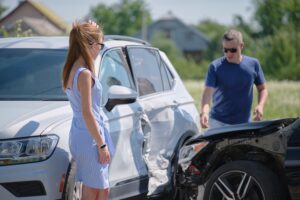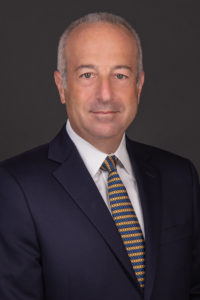After a car accident, determining who caused the accident and which party hit the other party can make a huge difference in your ability to pursue compensation for the damages associated with the accident.
Unfortunately, in many cases, it can prove difficult to establish liability. Sometimes, the liable driver may fail to accept responsibility for those key actions. In other cases, neither driver may entirely know what led to the accident, particularly if one or both drivers suffered from distraction at the time of the incident.
By working with an attorney, you can get a better idea of who likely hit who in a car accident and, therefore, what you may need to do to seek compensation when another driver’s negligence leads to an accident. Get in touch with a car accident attorney who helps you in the legal process.
Both Drivers’ Statements
As a first step in the inquiry process, lawyers and insurance companies will often talk to the drivers involved in the accident and any passengers in the vehicle at the time of the accident. The drivers’ statements about the accident can provide both sides with a great deal of information about the incident.
In some cases, one driver may admit to something that may have contributed to the accident: distraction, speeding, or running a red light or stop sign, for example. In other cases, an insurance company or attorney may identify inconsistencies in one party’s statements that can make it evident which driver may have caused the accident.
Your lawyer may want to talk to you about your statement as soon after your car accident as possible since your memory of the event may fade quickly.
Witness Statements
Witness statements can prove very useful in many car accident scenarios. Witnesses may have a better view of the accident than either party involved. For example, witnesses may have a clearer view of which party stopped at an intersection or which party had the red light. Witnesses may also notice things the drivers involved in the incident failed to notice. A witness might have seen the light change or noticed that a pedestrian crossing had lit up, allowing a pedestrian to cross, but the driver failed to see that change.
Witness statements may also prove more accurate than the statement issued by either driver involved in the accident. Witnesses often have relatively low involvement in the accident itself, with no stake in who bears liability for the incident, so they may give a more accurate statement of everything that led to the accident.
Like the drivers’ statements, however, witness statements may need to occur shortly after the accident. Memory can fade quickly, especially after a traumatic incident. Witnesses who saw the accident clearly may also have trouble keeping their memories straight as they go through multiple statements or hear many questions from the insurance company or people who may have seen the accident.
The Police Report

The police report is vital in establishing what led to a car accident. Insurance companies and lawyers cannot go back and view the scene of an accident. While they can listen to witness statements and use other information to help them assess what may have led to the incident, they cannot go back to the scene itself.
Police officers, on the other hand, respond directly to the scene of the accident. They may have access to details that will be cleaned away soon after the accident, including the exact position of the vehicles on the road after the incident. By looking over the accident report, lawyers and insurance companies can often get a clearer idea of what may have led to the accident.
A police report may also contain citations related to the incident, including citations for drunk driving. A drunk driving conviction may help increase your ability to establish that the other driver committed an act of negligence that may have led to the accident.
Vehicle Positions
Often, the vehicles’ position in a car accident can serve as evidence of what likely led to the incident. Suppose, for example, that the two vehicles sit at an intersection. One vehicle has hit the other in the rear. In most cases, the rear driver will bear liability for a rear-end collision since it generally indicates that the rear driver either failed to stop or suffered from distraction that caused him to take his foot off the brake.
On the other hand, a careful examination of the scene of the accident may show that the vehicles sat at a steep incline. If the front driver took his foot off the brake and did not accelerate correctly, he could have rolled back into the rear vehicle. A look at the accident scene, including a careful evaluation of the placement of the two vehicles, can reveal a great deal about the likely cause of the accident.
Likewise, the position of the vehicles in an accident can provide essential information about the likely cause of the accident. Suppose, for example, the accident occurred while a driver tried to merge onto a major highway. A look at the two vehicles may show that one driver had not yet moved over into the flow of traffic, which means that the driver attempting to merge may have crossed over the line too soon, causing an accident.
At the scene of the accident, both drivers involved in the crash and the police officer responding to the crash will have a chance to look over the scene directly. However, in some cases, you may not think about the evidence you need to establish liability until well after the initial incident itself. In that case, you may need to use photos of the accident scene to help give you a better idea of who likely bears liability for the incident.
Accident Scene Photos
In many cases, photos of the accident scene can provide incredibly valuable insight into what likely led to the accident. Photos of the accident can help reveal the placement of those vehicles on the road and the damage to the two vehicles.
Even features of the scene itself that may have contributed to the accident, like a bush that may have blocked one driver’s view or a complicated intersection that made it difficult for one or both drivers to determine whether they had the right of way at the time of the accident. Photos may come from either party involved in the accident or the police officers who responded to the scene. Some witnesses may also take the time to snap photos, which you might have the right to use as evidence.
Accident Video Footage
Having video footage of your accident can make it much clearer what actually caused the accident. Video footage captures all the details of the accident: the color of the light as you moved through the intersection, the forward jolt of your vehicle if you got hit from behind, and even, in many cases, the erratic behavior of a driver who drove while inebriated or distracted. Video footage of the accident can come from one of several sources.
Most commonly, video footage comes from a dash cam held by one of the drivers involved in the accident. A dash cam generally only sees things that occur directly in front of the vehicle. However, that dash cam can capture considerable footage that may prove useful if you find yourself fighting to establish liability after an accident.
Some drivers seek video footage from security cameras near the accident scene. For example, if your accident occurred in or near a store parking lot, that store might have a copy of the video footage of the accident, which would help more clearly show what exactly led up to the accident.
Finally, some traffic cameras do record footage. A lawyer may need to act fast to get a copy of that footage since it often does not get stored long-term. However, traffic camera footage can prove essential in cases of disputed liability.
Vehicle Damage
Sometimes, you may need to use the damage to the two vehicles to help establish what led to the accident. In many cases, an expert can use photos of the accident scene and the vehicle damage to establish what likely led to the incident.
For example, an expert might note that a swipe down one side of a vehicle, with damage to the front of the other, could indicate that the vehicle with damage in the front sideswiped the other vehicle. With more complicated damage to the vehicles, an expert may need to spend more time reconstructing the accident, including talking to the people involved or taking a closer look at the actual scene.
Working with a lawyer can prove essential if you need to look at damage patterns to the vehicles to determine liability. A lawyer can help provide much better insights into how to work with an expert witness, what information the expert may need, and how to use that information as part of your injury claim.
Establishing Liability in a Car Accident: Protecting Yourself
After a car accident, the drivers involved in the accident should not accept liability for the accident itself. You may need to follow several key steps as you move forward with a claim after the car accident.
Get in Touch With a Lawyer as Soon as Possible.
After your accident, you should not deal with the insurance companies that cover either party on your own. The insurance companies may pressure you to make a statement about the accident.
In many cases, you may find yourself pressured to accept partial liability for the accident, even when you know that you did not contribute to the accident in any way. Unfortunately, the insurance adjuster may use statements you make to help put part of that liability on you.
A lawyer can help you frame your statement to avoid any suggestion of liability and help you deal with the insurance company.
Write Down or Record What You Remember About the Accident.
Memory can fade quickly after a car accident. Even a few hours after the accident, you may no longer clearly remember all the details of the scene. As those details fade, it can be difficult to put together a clear statement regarding what likely caused the accident. You may want to record your statement as soon after the accident as possible. Allow your lawyer to guide you.
Do Not Deal With the Insurance Company Alone.

Car Accident Lawyer, Andrew Finkelstein
Let your lawyer determine when you talk to the insurance company and provide guidance about how you may want to handle those interactions. Insurance companies can prove tricky after a car accident, especially one that results in serious injury or substantial property damage.
If you try to handle those discussions on your own, the insurance company may end up ignoring the full extent of your injuries or pressuring you to accept partial liability for the incident. A lawyer can manage those interactions.
Give Your Lawyer All the Information.
Sometimes, you may feel tempted to lie to your lawyer or omit information that might make you look bad. However, when dealing with your lawyer, you should provide all the information about the accident and let your lawyer offer you more insights into your next steps.
If you struggle with disputed liability related to a car accident, do not try to handle the claim on your own. Contact an experienced lawyer to learn more about your rights and how to effectively guide your claim.
